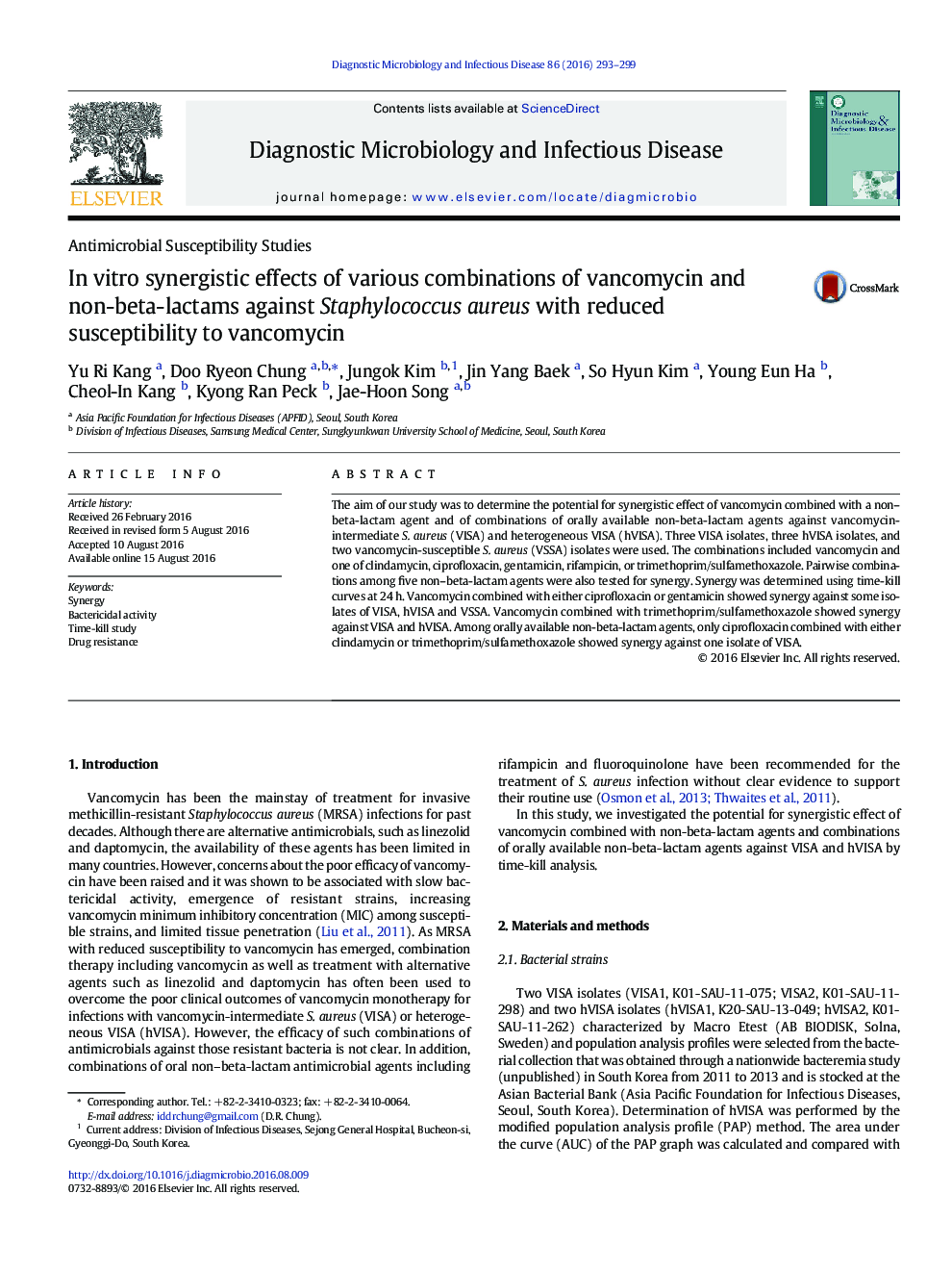| Article ID | Journal | Published Year | Pages | File Type |
|---|---|---|---|---|
| 5666004 | Diagnostic Microbiology and Infectious Disease | 2016 | 7 Pages |
â¢Determining synergistic effect of combined antimicrobials against VISA and hVISAâ¢Three VISA, three hVISA, and two VSSA isolates were tested by time-kill analysis.â¢Vancomycin combined with ciprofloxacin or gentamicin was partly synergistic.â¢Vancomycin combined with trimethoprim/sulfamethoxazole showed synergy.â¢Ciprofloxacin with clindamycin or trimethoprim/sulfamethoxazole partly synergistic.
The aim of our study was to determine the potential for synergistic effect of vancomycin combined with a non-beta-lactam agent and of combinations of orally available non-beta-lactam agents against vancomycin-intermediate S. aureus (VISA) and heterogeneous VISA (hVISA). Three VISA isolates, three hVISA isolates, and two vancomycin-susceptible S. aureus (VSSA) isolates were used. The combinations included vancomycin and one of clindamycin, ciprofloxacin, gentamicin, rifampicin, or trimethoprim/sulfamethoxazole. Pairwise combinations among five non-beta-lactam agents were also tested for synergy. Synergy was determined using time-kill curves at 24Â h. Vancomycin combined with either ciprofloxacin or gentamicin showed synergy against some isolates of VISA, hVISA and VSSA. Vancomycin combined with trimethoprim/sulfamethoxazole showed synergy against VISA and hVISA. Among orally available non-beta-lactam agents, only ciprofloxacin combined with either clindamycin or trimethoprim/sulfamethoxazole showed synergy against one isolate of VISA.
